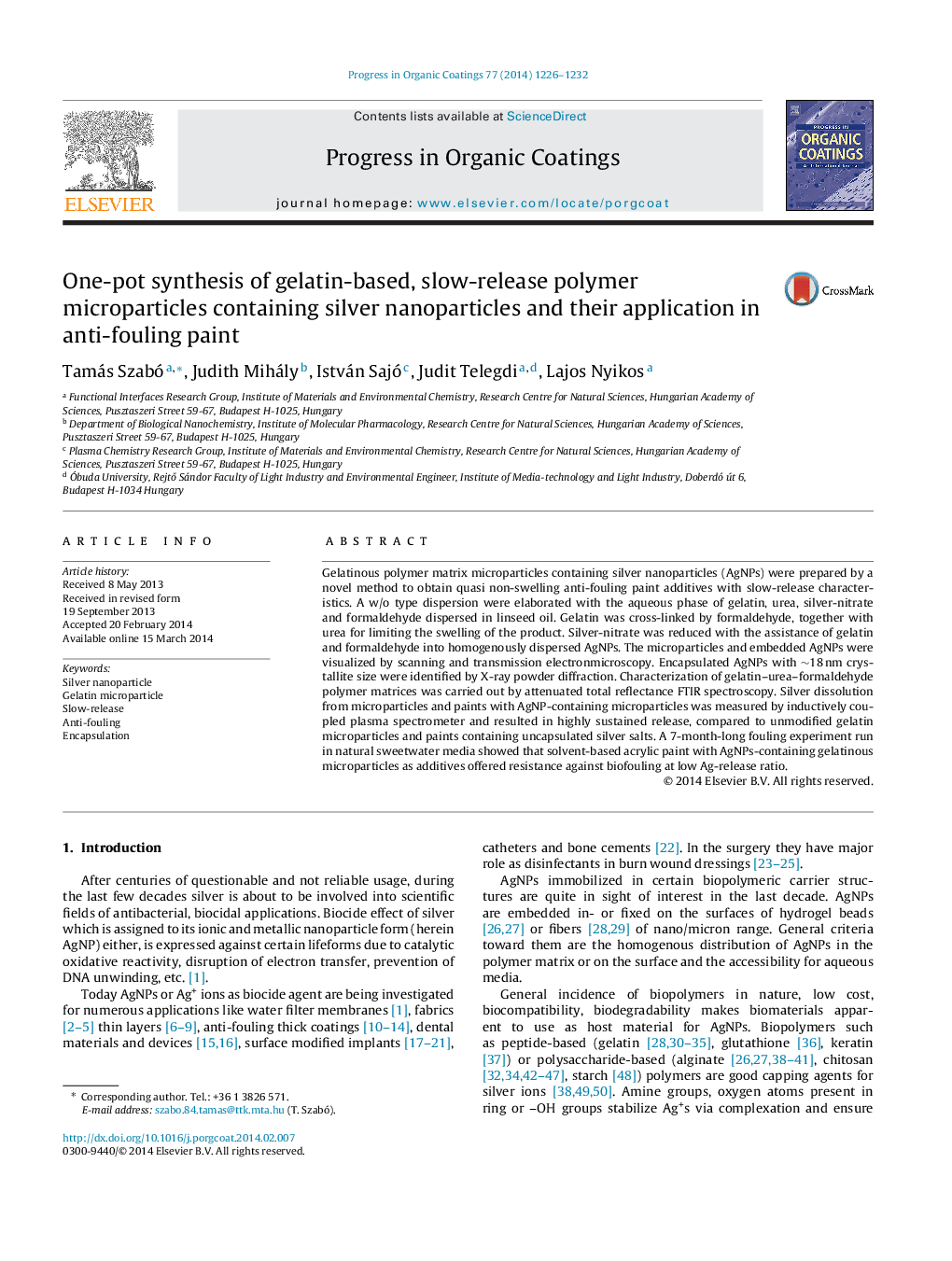| Article ID | Journal | Published Year | Pages | File Type |
|---|---|---|---|---|
| 692720 | Progress in Organic Coatings | 2014 | 7 Pages |
•Gelatin–urea–formaldehyde microparticles embedded with nano-silver were prepared.•Novel w/o type dispersion polymerization results in non-swelling gelatinous matrices.•Particle shaping, cross-linking runs together with in situ silver reduction.•The product serves as additive for coatings used in wet conditions.•Sustained release of silver and its elongated anti-fouling effect is demonstrated.
Gelatinous polymer matrix microparticles containing silver nanoparticles (AgNPs) were prepared by a novel method to obtain quasi non-swelling anti-fouling paint additives with slow-release characteristics. A w/o type dispersion were elaborated with the aqueous phase of gelatin, urea, silver-nitrate and formaldehyde dispersed in linseed oil. Gelatin was cross-linked by formaldehyde, together with urea for limiting the swelling of the product. Silver-nitrate was reduced with the assistance of gelatin and formaldehyde into homogenously dispersed AgNPs. The microparticles and embedded AgNPs were visualized by scanning and transmission electronmicroscopy. Encapsulated AgNPs with ∼18 nm crystallite size were identified by X-ray powder diffraction. Characterization of gelatin–urea–formaldehyde polymer matrices was carried out by attenuated total reflectance FTIR spectroscopy. Silver dissolution from microparticles and paints with AgNP-containing microparticles was measured by inductively coupled plasma spectrometer and resulted in highly sustained release, compared to unmodified gelatin microparticles and paints containing uncapsulated silver salts. A 7-month-long fouling experiment run in natural sweetwater media showed that solvent-based acrylic paint with AgNPs-containing gelatinous microparticles as additives offered resistance against biofouling at low Ag-release ratio.
